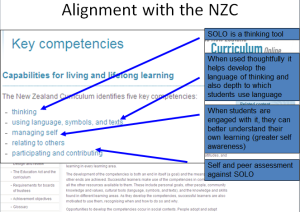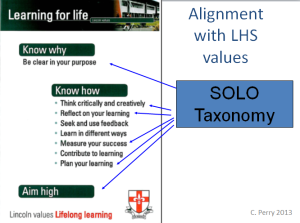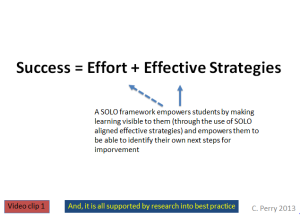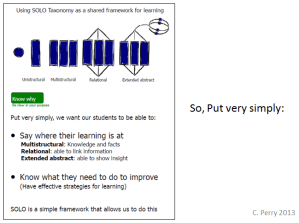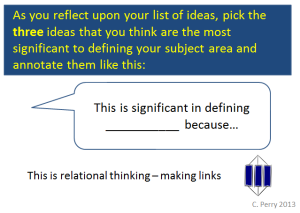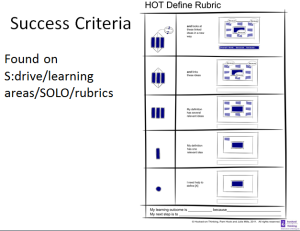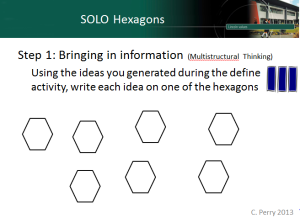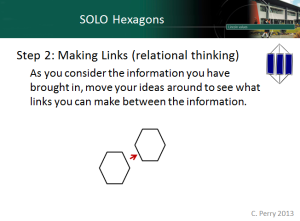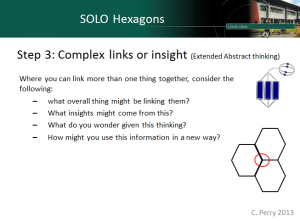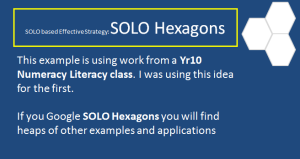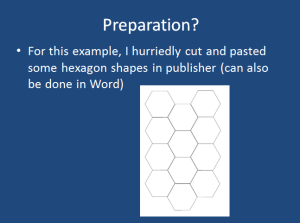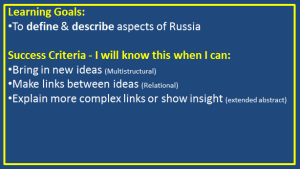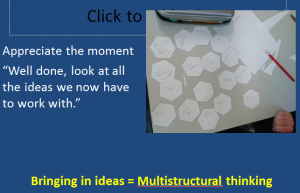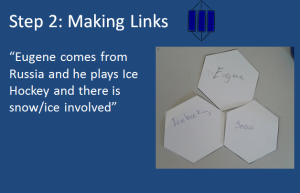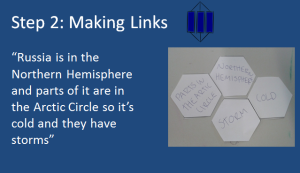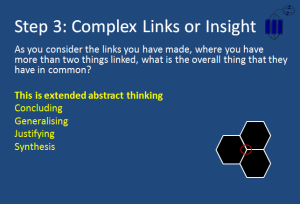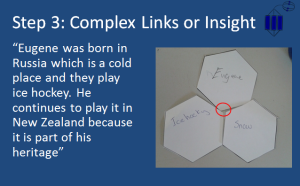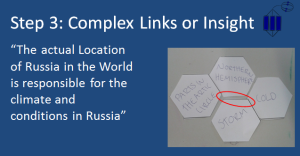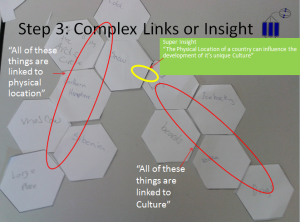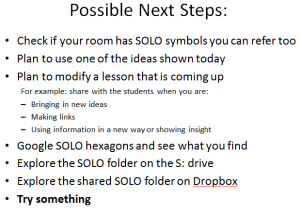At the start of the year, I was invited back to facilitate the first SOLO learning team meeting for staff that were new to our school. This is one of the strategies that the school uses to enact the vision of having SOLO as a whole school framework for learning. Anyway, in the past, I have usually launched into the HOT maps straight away but this time I thought I would start by trying to help teachers connect SOLO to a strategy they already may use and give one strategy that might be new but very cool. What follows is really just me documenting my thinking but it may be useful???
So………. I started with a bit of a timeline to show the culture and history of learning teams at our school. Then it was on to the rational of “Why SOLO” referring to the one given in “SOLO Taxonomy: A guide for School” by Pam hook and Julie Mills. 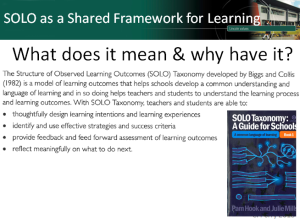
I also aligned it with our school values and the New Zealand Curriculum to help cement the value of it as a framework.
Then we did some “what is SOLO” activities but simplified it down to the slide below.
Then we explored the expectations of the learning team. Essentially it is about “action research” or “inquiry learning” (identify something you might work on, plan an intervention or trial something and then reflect upon the results).
To finish, we had time to look at two take away ideas. The first was about trying to make the link between SOLO and a really common strategy that teachers use – that being a brainstorm. The following slides show the process we went through. My aim was to highlight that this can be more than just a strategy to bring in ideas or start thinking in a lesson.
I am also a huge fan of Art Costa’s work and in the slide above, I have used a positive presupposition (as you think about…) and invited multiple ideas (as many as you can). It can get a bit wordy but I think the language we use can really influence the effectiveness of the thinking. On that, I am really particular with how I bring in ideas/brainstorm with a class. The golden rule is “value all thinking in a neutral way” i.e. just say “thank you” to student responses. It took me a while to see how important this is but I was lucky enough to see an experienced teacher really shut down a classes thinking within just a few seconds. It’s a story worth telling so I will….. The teacher had asked for ideas on a certain topic, 30 hands went up, their owners keen to share their thinking. First response the teacher praised with a “Good idea”. Immediately a third of the hands went down. The next idea the teacher praised with “fantastic idea!”. At this point all hands went down and the teacher could not get any more ideas out of the class. What Art Costa had found was that as soon as the teacher placed a value like “fantastic” on a students thinking, all the other students begin filtering their ideas and anything that they do not deem as equal to or that can beat “fantastic” they choose not to share. Moral of the story, if you want to encourage thinking, manage your responses – you can be critical of the ideas after.
Anyway, any brainstorm can be elevated to relational thinking by doing the following:
This example also shows how you can use SOLO to allow for differentiation within a lesson. The last slide below uses one of the define map visual rubrics that comes from Pam and Julie’s work.
The next example we used was SOLO Hexagons as shown below: (I need to get on with planning the next session so I will just do a cut and paste – Sorry, a bit rushed and brief)

